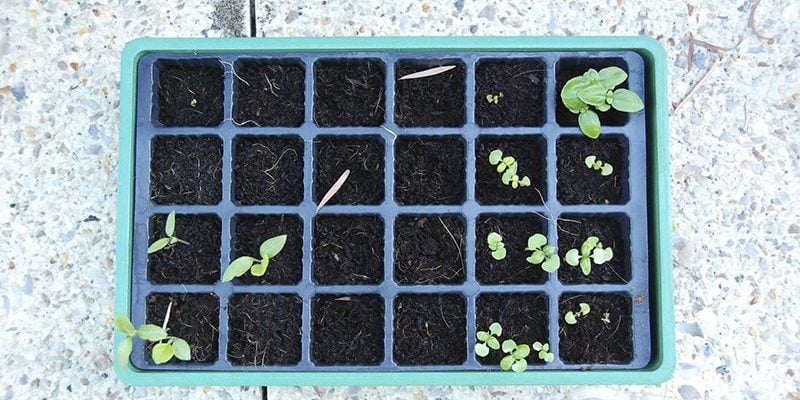Estimated reading time: 5 minutes

Pasilla Oaxaca chillies growing in the hills of Southern Mexico’s Mixes.
Whether you’re a hothead or you prefer a mild and mellow heat, growing your chillies is super easy and unbelievably satisfying.
Getting Started:
Firstly, you’ll need to get everything you need. A good place to start is to decide on which chillies you’d like to grow. You will be able to get chilli seeds from most supermarkets. However, if you’d like a bit more choice, then get on the web and have a look around. We used Sea Spring Seeds, which has an excellent variety. Tempting as it is to fill your basket with Dorset Naga’s and other fierce varieties, bear in mind that this is quite an involved process and to end up with chillies so hot that you can’t eat them won’t be as fun. So maybe try mixing things up and growing a few types (taking care to label which is which).
Next, you’ll need to get your hands on some seedling trays, compost and vermiculite. If you’re starting your babies off on a windowsill, make sure you’ve cleared a big enough spot for them where they’ll get the sun they need.
Fill up each section and compress the compost a little. Make a small hole in the middle of each section (about 6mm deep) and pop a single seed in each. You can then cover it and gently compress. You can then apply a thin layer of the vermiculite which will help keep your seedlings aerated and hydrated. A water spray is really useful for delivering just the right amount of liquid to your seedlings since too much will damage their chances of germinating. You’re looking to maintain a moist, but not soggy soil at all times. Chillies can be grown alongside other plants.

Caring For Your Seedlings:
Pop the trays onto a windowsill with some newspaper underneath to catch any leaks and Bob’s your mother’s brother. Deliver a daily dose of mist from your water spray, and after a couple of weeks, you should notice the unforgettable sight of shoots sprouting from the soil. Very exciting.
Seedlings can be transferred, along with their compost, once the plants reach around 2cm in height. They can be planted into a 7.5cm pot with the soil coming up to just below the leaves. Keep an eye on your chilli plants, removing weeds and harmful common pests such as aphids. Like our farmer in Mexico, you don’t want to rely on chemical pesticides for this. A natural product is far better for you, not to mention more satisfying.
At this point it’s best to move the plants into a greenhouse to expose them to as much sun as possible. Similarly, Ricardo will move his crop at different stages of growth to take advantage of the microclimates found in the mountainous region that he works. This technique exposes the seedlings to a tropical climate (lowland) in the early stages and a sunnier, drier climate (highland) in the latter stages.

Growing Up:
Once your plants are approximately 20cm in height, you can offer them some support by tying a stake next to the plant and securing it with twine. Once flowering begins, increase the chances of pollination by using a very light brush to delicately cross-pollinate your flowers. Flowering is also a good indicator of when you should start to use a liquid feed. A tomato feed is perfect.
Once you see roots through the holes in the bottom of the pot, it is time to transfer them into 12cm pots. As the plants grow, you can pinch out any tips which begin to grow. This will encourage sideshoots and flower buds.
By around May, you can move your impressive looking chilli plants outside. You can also move them into larger 5-litre pots. Replace small stakes with larger ones as the plants grow.
A steady supply of water is very important in maintaining good plants and that all-important result. You can give them extra on very hot days (let’s hope we get some of those!). All the hard work comes to fruition between July and September.

Harvest Time:
Between July and September is harvest time! Use a sharp knife or scissors to make a nice clean cut rather than just yanking them off. At which stage you pick your chillies is up to you. We prefer a nice ripe chilli, which will involve leaving them a bit longer.
We hope that this inspires you to have a go at growing your chillies this year.
We would love to hear from you if you’re giving it a go, so please either tell us about it below, or even better, tweet us pics of their progress @Luchito_Mexico.



